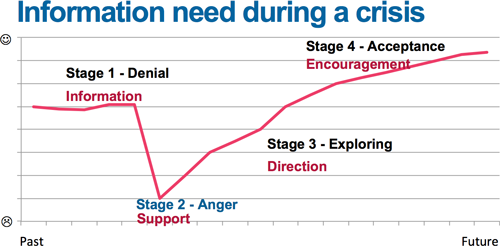Systems, websites and apps get old. They need to be updated. New functionality or a new user flows may be a result of this. Some users like – or at least tolerate – change. But, some users find it very upsetting, on the verge of a crisis when you “move their stuff”. To measure usability in the middle of a crisis would not give a fair result to the new system.
First a little about the emotional journey of the user. The emotional curve a user goes though when they get upset because you update their favourite website can be the same curve as when having a personal crisis. Though, the feelings are not as deep, hurtful and painful, they still follow the same pattern.
 There are ways to handle this – usually with information. And that is the right kind of information at the right time.
There are ways to handle this – usually with information. And that is the right kind of information at the right time.
Continue reading “Don’t move my stuff! Reaction to change AND when to measure usability”

 User tests – what the user thinks
User tests – what the user thinks